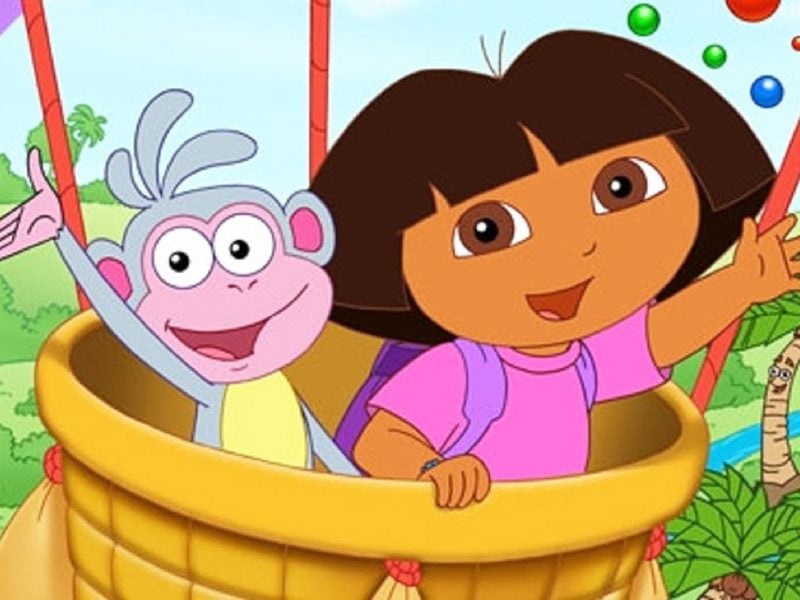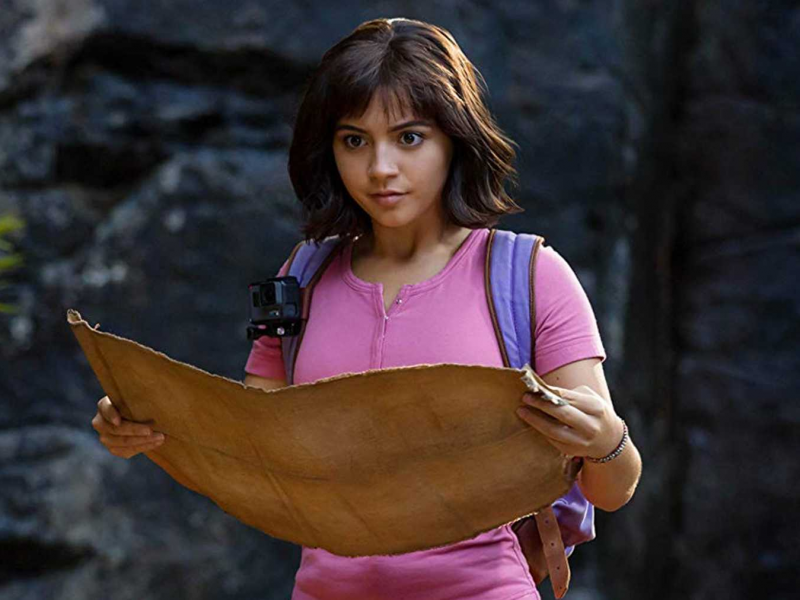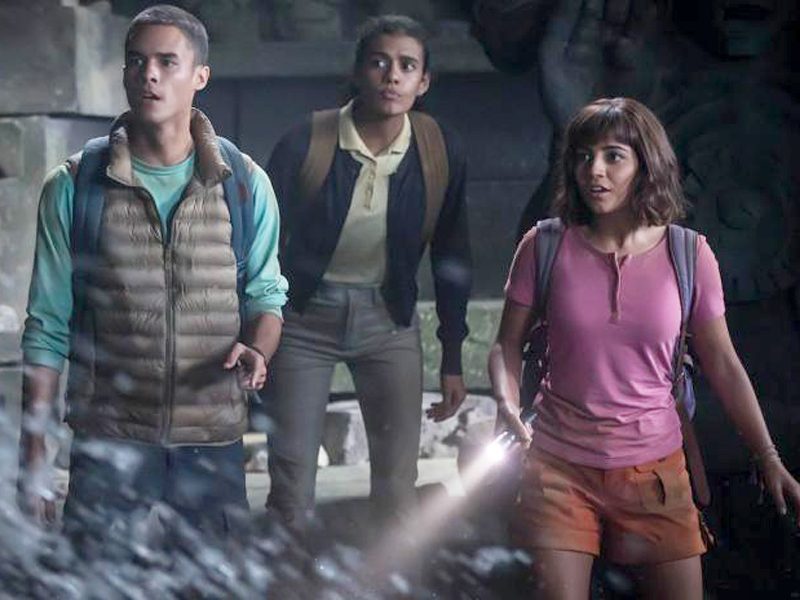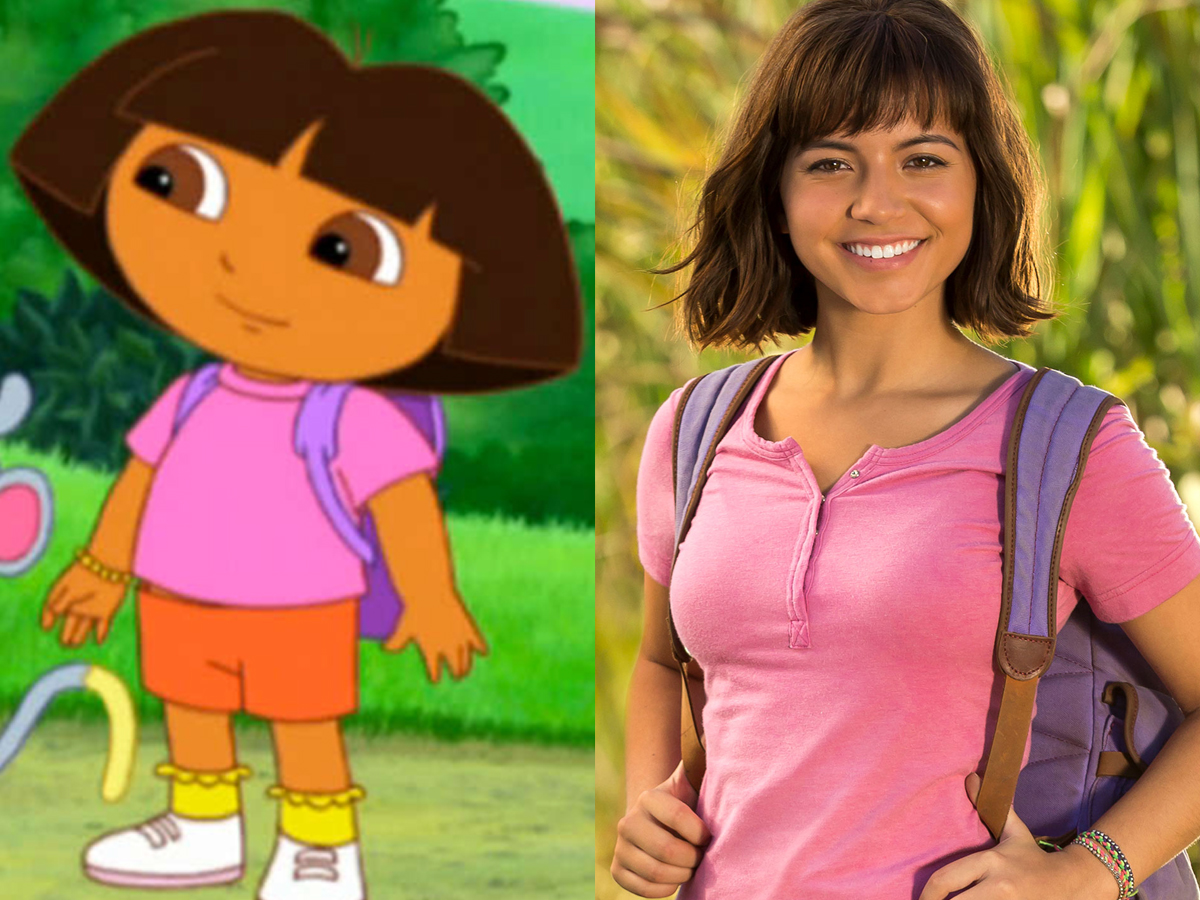- Nick Jr.’s “Dora the Explorer” was recently turned into a live-action remake, “Dora and the Lost City of Gold,” which has garnered great reviews so far.
- A recent episode of NPR Latino USA’s “The Breakdown: The Legacy Of ‘Dora The Explorer‘” explored the decision to make Dora a Pan-Latin character so she could appeal to a larger audience.
- Like the original cartoon series, the new movie didn’t define Dora’s ethnic identity.
- When I watched Dora as a kid, I thought she was Mexican given her appearance and the way that she spoke Spanish. That didn’t make me love her any less.
- Visti Insider’s homepage for more stories.
I remember watching “Dora the Explorer” on Nick Jr. every weekday morning when I was a kid.
Dora was a bilingual seven-year-old who went on adventures and asked viewers for help in solving problems along the way. She was always accompanied by her best friend Boots, a talking monkey who wore red boots, and taught a few basic Spanish words on each episode.
And even though I grew up in Puerto Rico and spoke Spanish every day, I watched the original English version of the show – even if the rest of my school friends watched it in Spanish.
All these years, I always assumed Dora was Mexican. That’s why I was so shocked to learn on a recent episode of NPR Latino USA that the iconic Latina character actually isn’t supposed to have an ethnicity at all.
'Dora the Explorer's' Pan-Latin identity was a product of her time
With news of Dora's reboot, two of Latino USA's reporters, Antonia Cerejido and Janice Llamoca, did extensive research on the cartoon's background in "The Breakdown: The Legacy Of 'Dora The Explorer.'"
"Janice and I were both curious about Dora because her rhetoric seems so antithetical to most of the rhetoric coming from politicians, in particular, the President [Donald Trump]," Cerejido told Insider. "Given that she first aired nearly 20 years ago, we were curious to see what her legacy has been."
Cerejido added that they were also "curious about how her image has helped shape the way that the Latinx community is perceived in the US, especially given her pan-Latina identity."

In the 30-minute episode, the producers learned that Dora's original creators - writers Chris Gifford and Eric Weiner, and producer Valerie Walsh - employed a team of consultants to help build the character.
The consultants were important to the process because the creators weren't Latinx themselves.
They also wanted to represent the community on TV during a time when conservative politician Pat Buchanan was running for president and using an anti-immigrant rhetoric that targeted Spanish-speakers as well as other non-white communities in 2000.
Carlos Cortés, who was a history professor at the University of California in Riverside, was one of the series' consultants at the time and told NPR why he thought making Dora Pan-Latin was the best idea.
"Someone came up with the idea, 'We should make her very embedded in one culture, Mexican or Puerto Rican or Cuban,'" Cortés told NPR. "I said, 'Look, there are Latinos in the United States of all kinds of backgrounds and I think it's important that kids of different Latino backgrounds be able to identify with Dora.'"
Thus, Dora was born.
They gave her mestizo - which means a mix of European and Indigenous ancestry - features: Brown skin, brown eyes, and straight, dark hair.
The show was indeed a huge success and was translated into more than 25 languages
"Dora the Explorer" was one of Nick Jr.'s longest-running shows, and even had a spin-off series called "Dora and Friends: Into the City" that premiered in 2014.
The creators credit the success of "Dora the Explorer" to the extensive research that went into each episode. Gifford told NPR that researchers would read a "storybook version" of episodes to more than 200 kids before they aired.

The creators of the new Dora film chose to leave her ethnicity unclear yet again, 19 years later
Paramount Pictures decided to bring the beloved character to life this summer, in a family-friendly film that garnered great reviews from critics.
"Dora and the Lost City of Gold" follows a teenage Dora who's sent to high school in Los Angeles after growing up in the Amazon, but must later save her parents and solve the mystery of a hidden Incan city of gold.
It starred a brilliant Isabela Moner as Dora, Eva Longoria and Michael Peña as her parents, as well as other big-name actors like Eugenio Derbez, Benicio del Toro, and Danny Trejo.
Variety even wrote that Dora ranks "as perhaps the most 'woke' big-screen adventurer since the invention of cinema."
Much like the show, which premiered in 2000, "Dora and the Lost City of Gold" made no mention of a specific ethnic background for Dora. Unlike the show, though, the movie was set in real-life countries and made a point to accurately depict Inca culture as well as the indigenous language, Quechua.
This only makes the new film's decision to keep the Latina heroine ethnically ambiguous all the more puzzling to me.
Giving Dora a definite ethnicity wouldn't have alienated audiences, and it's foolish to think that it would've in this day and age either
By not exploring Dora's own specific ethnic identity - especially after almost 20 years after her debut - it feels like "Dora and the Lost City of Gold" was missing something.
When I watched Dora as a kid, I thought she was Mexican, given her appearance and the way that she spoke Spanish. That didn't make me, a Puerto Rican and Dominican girl, love her any less. On the contrary, I still saw myself in her.

What made Dora so groundbreaking and special was the way that she opened people's minds to cultures and languages that might be different from their own. She represented a smart, brave, and welcoming person who made young kids feel like they could be the same way.
And there's no question that Dora's broader message of acceptance and female-empowerment helps the character remain relevant today.
Exploring Dora's ethnicity, whether it be Mexican or Peruvian or Brazilian, wouldn't have taken away from the character's relatability.
Recent box office successes like Marvel's "Black Panther," which had a majority black cast and celebrated African and African-American culture, indicate that people will flock to the movie theaters to watch stories that highlight one culture in particular.
It's 2019. We're ready to see stories with more nuance. We want to see characters that represent specific ethnicities and own their identity - it only adds more value to their stories for those of us watching.
